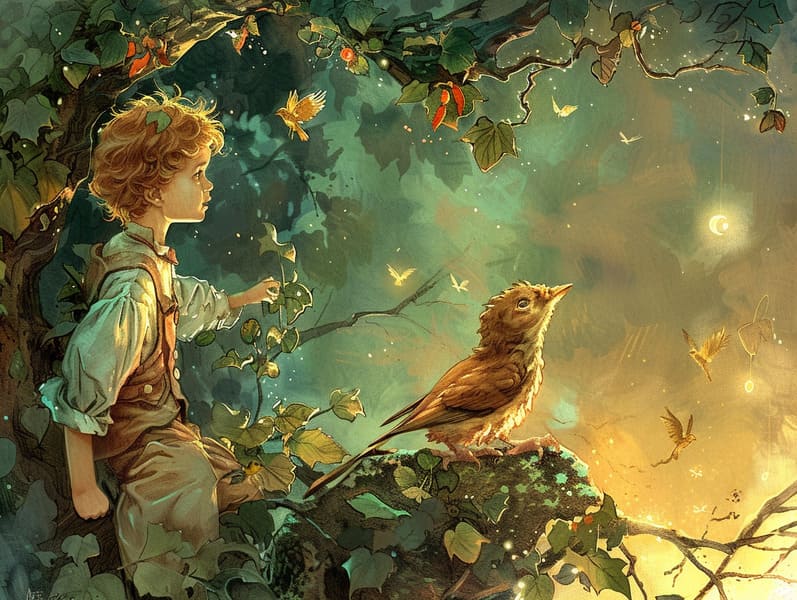The Formation of Old Fairy Tales and Its Undying Fascination.
The Formation of Old Fairy Tales and Its Undying Fascination.
Blog Article

Grimm's fairy tales have historical significance. These stories have been shared from one generation to the next ages before they were ever documented. They developed from a variety of societies, including Western traditions. They were initially passed along among grown-ups, often carrying themes and messages aligned with the societal norms and beliefs of the time.
The Brothers Grimm, Jacob and Wilhelm, were among the first to collect and release many of these beloved tales. Their published works, "Grimm's Fairy Stories," included tales like "The Story of Cinderella," "The Story of Hansel and Gretel," and "Little Snow White," which have since become hallmarks in the world of iconic fairy tales. Similarly, Hans Christian Andersen's charming stories, such as "The Sea Maid," and "The Little Duckling," have captured hearts worldwide, establishing their place in the pantheon of classic fairy tales.
Despite being ancient, fairy tales remain as applicable as ever, especially as nighttime stories for kids. These whimsical stories are now available in different formats, including richly illustrated books, whimsical animations, and online storybooks.
Their persistent charm can be ascribed to several whimsical characteristics:
Crucial Morals: Old fairy tales often whisper important moral lessons. Tales like "The Wolf and the Liar" teach the value of sincerity, while "The Tortoise and the Hare" exemplify the qualities of steadfastness and unassuming nature. These stories offer little ones clear distinctions between moral and immoral, developing their moral compass in a mild yet deep way.
Compassion and Insight: Timeless fairy tales frequently depict heroines facing problems and hurdles, provoking young readers to feel with their struggles and applaud their triumphs. For instance, "The Story of Beauty and the Beast" emphasizes the importance of looking deeper to see the real character of a person, strengthening awareness and appreciation.
Cultural Understanding: Many old fairy tales are steeped in the cultural contexts from which they were born. Reading these stories can provide intriguing perspectives into different social structures, strengthening a sense of world awareness and knowledge.
Fantasy and Imagination: The mythical elements in old fairy tales—enchanted lands—provoke children’s innovations. These tales bring readers to enchanted realms, motivating innovative thinking and a sense of marvel that endures a lifetime.
Traditional fairy tales are not only alluring but also pedagogical. They act as magical tools in enhancing various mental and emotional abilities in young readers. When classic fairy tales are voiced, they strengthen language skills by teaching new phrases and intricate sentence structures. This practice also cultivates hearing perception and attentiveness, as little ones keep up with the story, anxious to see what happens next.
Furthermore, analyzing the themes and characters of classic fairy tales can nurture evaluative skills and critical thinking. Kids are educated to discover patterns, expect results, and get cause and effect. These debates also contribute to children voice their thoughts and feelings, nurturing their emotional intelligence.
In today’s technological age, the availability of online fairy tales has made these stories more obtainable than ever. Web platforms and apps give comprehensive collections of traditional fairy tales that can be accessed or listened via anytime, anywhere. Fairy tales told out loud are particularly well-received, offering an entertaining method for little ones to relish these whimsical stories. Audio stories and narrated videos transport characters find it here and settings to life, often supplemented by mesmerizing audio effects and background music that enrich the narrative journey.
The timeless charm of timeless fairy tales lies in their ability to change to today's world while continuing with their main lessons. Contemporary renditions of these stories often showcase more inclusive figures and modern settings, making them meaningful to today’s audience. However, the basic principles of boldness, compassion, and righteousness remain unchanged, continuing to reach audiences of all ages.
Traditional fairy tales also offer a sense of comfort and recognition. They render a organized narrative with a apparent beginning, middle, and end, often coming to a close with the settlement of conflicts and the triumph of morality over immorality. This regularity can be heartening for the young, rendering a sense of steadfastness in an unstable world.
Ancient fairy tales continue to captivate and teach new generations, maintaining their charm and relevance in modern society. As children's night stories, they render accessible a perfect blend of charm and understanding, cultivating moral values, empathy, and creativity. The presence of online fairy tales and the popularity of fairy tales voiced ensure that these classic tales remain accessible to new generations.
By maintaining and recounting these tales, we continue to esteem the rich tapestry of fables and cultural heritage. Whether you are enjoying a colorful picture book, experiencing a web-based library, or listening to an audio story, the grandeur of classic fairy tales is always within reach. These tales show us of the consistent nature of fairy tales and its ability to connect us across generations and cultures.
Be it you are enjoying a beautifully illustrated book, perusing a electronic collection, or listening through an narrated book, the charm of traditional fairy tales is always within reach.
These stories reveal of the perpetual impact of storytelling and its ability to link us across generations and cultures, forming a connection that captivates and teaches alike.